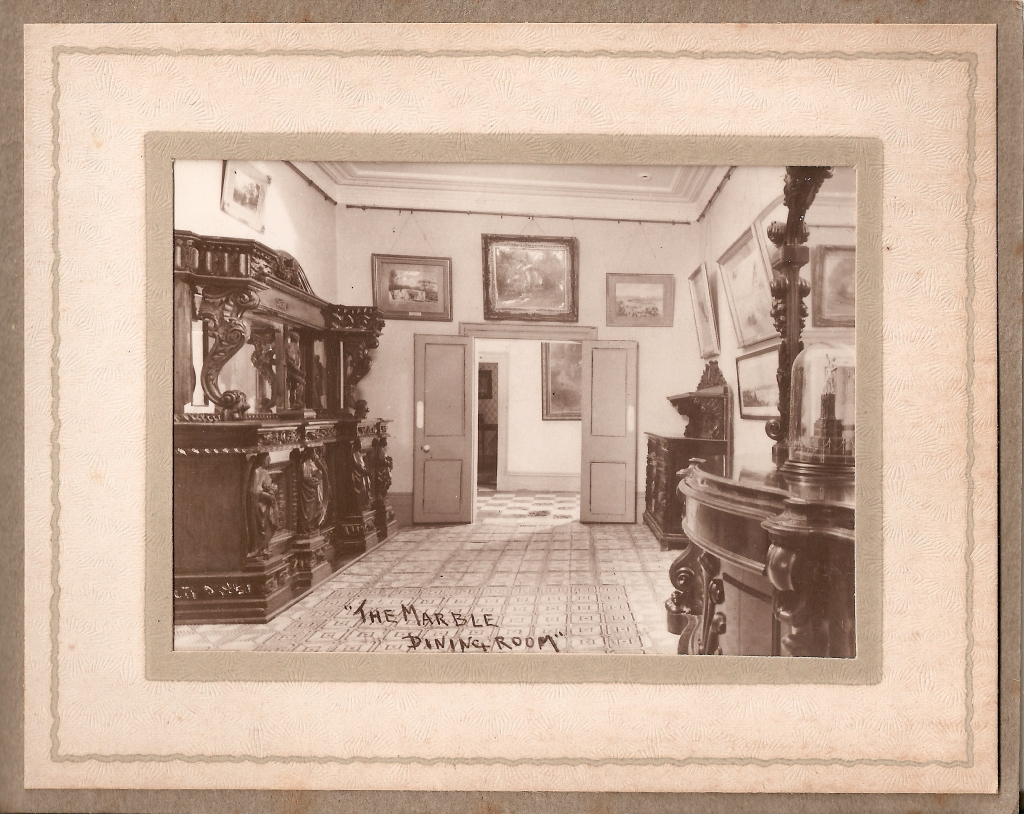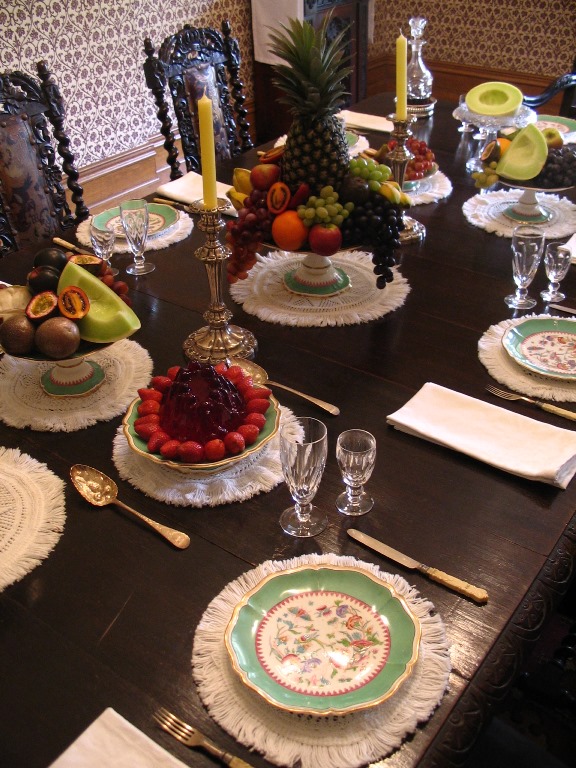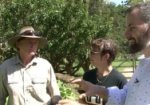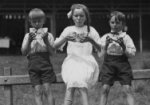The dining room used by the Wentworth’s at Vaucluse House takes us back in time from the present to the 1830s — not just for dinner for the many generations of families that lived here, but also the longer history of Vaucluse House as Australia’s first house museum.
The dining room used by the Wentworth family at Vaucluse House is slightly L-shaped and with off-centred French doors. This is a result of it being created in the shell of an earlier building built by Henry Browne Hayes, around which Wentworth was building a far greater house. The skewed floor plan enabled an arched niche to be created to frame the sideboard which would, by convention, usually sit symmetrically at one end of the room.

It was one of the earlier renovations, probably around 1830, with further alterations later that decade. It seems that plans later existed for a much larger dining room, which would have extended outwards on the opposing side of the house, however these – like the front door itself – never eventuated. As visitors experience the room today it also contains a wealth of furnishings – furniture, portraits and dinnerware – actually provenanced to the house, and so gives us a vivid insight to the Wentworths’ personal taste and how the room may have appeared in the 1860s.
Recreating an interior
When acquired by the NSW State Government in 1910, Vaucluse House was a forlorn, empty shell, its rooms devoid of furniture, carpets and curtains. Everything you see today is a recreation – albeit based on evidence and with a notable collection of material provenanced to the house and family. So where did all this material come from? Last month we talked about those staples of the dining room – sideboards – and had a look at a wonderful photo that shows two behemoths once on display in the Vaucluse dining room, one strategically covering the French doors. This view is taken from the reverse angle, and one sideboard has migrated to the south wall:

This shows the room as it was not long after opening to the public, when it was being furnished with material both provenanced to the Wentworth family and of objects of ‘Australian historical records and objects’. You can read more in this article by our colleague Joanna Nicholas, curator of Vaucluse House. Since then more original material has come back to the collection, both by sale and donation by family descendants. After many incarnations, the room seen today is as refurnished after 1980 when it was transferred to the newly formed Historic Houses Trust of NSW (now Sydney Living Museums): in keeping with 19th-century dining rooms style it is masculine in character – a contrast to the feminine drawing room – with a Gothic Revival wallpaper and rug and hung with family portraits:

Its recreated appearance is guided by two lists, an auction advertisement from 1853, and a second auction catalogue from 1900. In the latter, for the ‘estate of the late Miss Wentworth from Vaucluse House’ [1], we read of the furniture, paintings, bronze sculptures and a series of portrait medallions by English Pre-Raphaelite artist Thomas Woolner. Many objects that were reacquired by the first Trustees of Vaucluse House, a process that continues today, can be identified in the 1900 auction list, notably Lot 80: the ‘massive old oak carved dining table’:
[Lot number] 80 MASSIVE OLD CARVED OAK DINING TABLE, on boldly carved and turned legs, extending 10 ft., with spare leaves 82 Suite of Chippendale dining chairs in oak antique, with morocco leather seats, consisting of 2 carvers’ chairs and 8 dining chairs 83 Carved oak sideboard, Elizabethan design, 6ft., fitted with cellarette, trays enclosed cupboards and drawers 84 Invalid footstool 85 Small stool on glass feet BRONZES IN DINING ROOM 86 Two finely modeled bronzes, on marble bases, Apollo Belvidere and Venus 87 Two quaint candlesticks – Satyrs 88 Pair Roman lamps in bronze 89 Two gilt bronze tripod stands 90 Handsome black marble clock, with bronze panels, by le Roy, Paris, surmounted by bronze figure “Music”, signed Schcenewerk 91 Two Parisian ewer-shaped vases 92 Tall Bohemian glass lamp 93 Two tall crystal cut lamps 94 SET OF SEVEN BRONZE MEDALLIONS, signed F[sic]. Woolner, 1854: Mr J[ames] Macarthur / Sir Charles Nicholson / Sir James Fitzroy / Three other subjects not known 95 Brass fire guard and set fire irons
Being only a tad (actually quite a lot) interested in the neoclassical I’m instantly drawn to the number of bronzes in the room, an expression of Wentworth’s classical interest – albeit in a Gothic Revival house. Lot 88, the Roman lamps, sit on the mantelpiece today just as they likely did when the Wentworths ate here:
In Lot 94, the portrait medallion of James Macarthur tells a poignant tale of reconciliation: once very close, the Macarthur family and William Charles Wentworth had a significant and quickly hostile falling-out that followed the revelations in 1819 about William’s father’s shadowy past (“What, this fob-watch that just fell out of my pocket your honour? I’ve never seen it before in my life!”), and his own pursuit of a Macarthur daughter’s hand in marriage. Years later these political and social opposites reconciled, and James and his brother William called on Vaucluse House. The collection in their own house, the magnificent Camden Park, contains a medallion of Wentworth. Today a Woolner medallion of Wentworth hangs over the dining room door, while family portraits including this of Sarah Eleanor (Joody) line the walls:
While we’ve discussed the Wentworth’s Gothic sideboard, the other notable furniture includes the wonderful set of dining chairs:
A comfortable seat
Provenanced to the Wentworths, the imposing dining chairs, along with the tiled floor beneath them, have been surrounded by myth for a century. One story is that they were “from the Doge’s Palace in Venice” while another is that they were presented to Wentworth in thanks for his financial support of Garibaldi’s campaigns to unify Italy. The chairs are in fact English and date from c. 1855-60, and were possibly part of a consignment of furniture sent from Europe in 1859. Their detailing – the barley twist sides, putti holding aloft a crown, oak leaves and roses – emulates the late 17th-century Restoration style (the period between the restoration of Charles II as monarch in 1660 and the deposition of James III in 1688). This style of chair became fashionable in the 19th century, especially with the rise of the ‘Romantic’ interior – which had its origins in the Gothic Revival but embraced a wider range of stylistic references. Unlike many of its colonial contemporaries, Vaucluse House embraced the incoming Gothic style.
The chairs are significant for the survival of their quite wonderful and original, rich leather upholstery, which recalls the stamped and painted leather wall-coverings of palatial Renaissance and Baroque interiors. If you’d visited the house around 5 years ago you wouldn’t have been able to see these chairs in all their glory; their fragility required the seats to be covered with gauze to avoid abrasive contact and any fabric loss. A grant from the Copland Foundation funded their conservation and the fragile seat panels were revealed.
Unusual but not unique in colonial interiors, the tiled floors (seen in Lawlor’s photograph) were similarly shrouded in mystique: they were long described as being Pompeiian in origin, and that Wentworth was allowed to acquire them by Garibaldi. While Italian, in reality they date to the mid 19th century and are signed ‘Fabricado di Strino Ferdinando’.
Dessert is served
Today the table is typically set for ‘dessert’ using richly coloured dessert ware and glasses, again provenanced to the family. In period fashion, the setting is arranged on doileys, enabling the polished oak surface to be seen. We looked at this in an earlier post, ‘The cloth is removed’:

And to end….
I have to finish with one of my favourite images from the dining room, from when the house was yarn-bombed in 2010. Enjoy!
Notes
This post was originally published by Scott Hill, ‘the Curator’ in October 2015.
[1] ‘Catalogue of the furniture and effects, valuable pictures, bronzes, &c., removed by order of the administrators in the estate of the late Miss Wentworth from Vaucluse House, the auction rooms of Lawson, Caro & Co. Ltd., 128 & 130 Pitt Street, near King St., Sydney. To be sold by auction without any reserve‘. Friday, 23rd, & Monday, 26th Feb., 1900, Each day at 11 o/clock a.m.

